Installing Windows on an Xbox One APU: The Chuwi Aerobox Review
by Dr. Ian Cutress on December 24, 2020 9:45 AM ESTCPU Benchmarks, Power, Temperature, Noise
For office productivity, there’s no getting around the fact that these are Jaguar cores. Coupled with the memory bandwidth means that flicking between the basic documents can be somewhat laggy, and this isn’t really a system for anything other than email and web browsing. We still put it through our test suite, and the full range of tests were conducted. A few of them are highlighted here.
For reference, the Athlon 5370 mentioned here is a quad-core Jaguar.
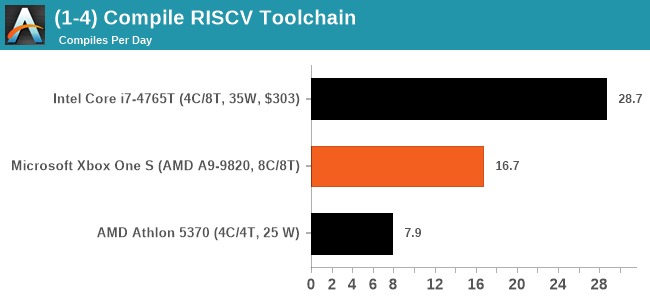
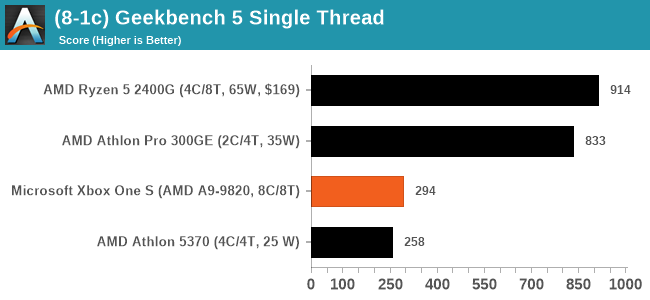

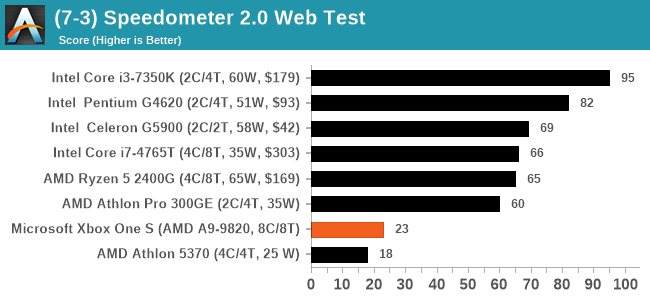
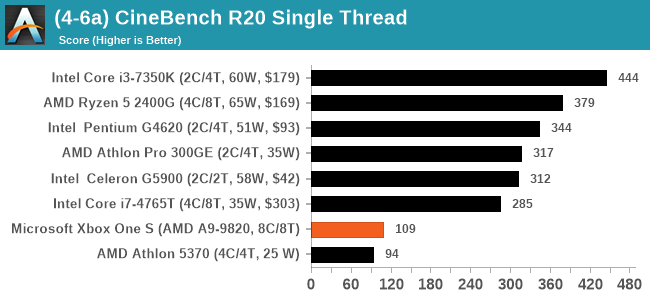
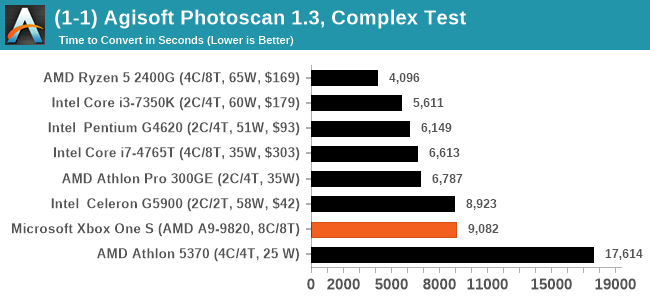

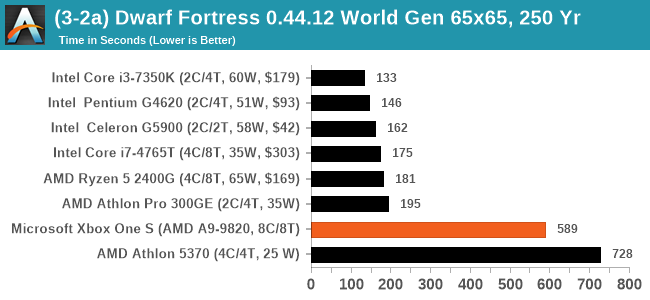

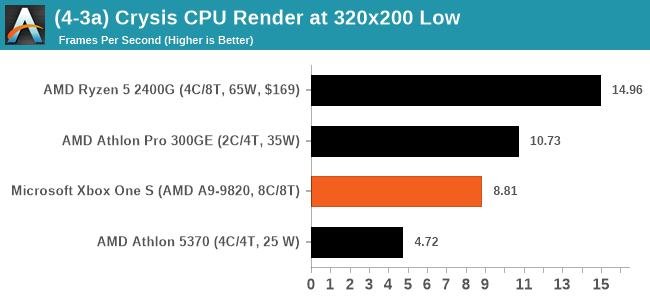
Power, Temperatures, Noise
I will say a few words on power and temperatures.
Our normal tools for extracting power do not work on this embedded processor, likely a function of its age (similar Jaguar desktop processors that were public have the same issue), however we were able to take some wall measurements.
At idle, we saw power consumption in the 65-70W range. This is fairly high for a HTPC, so we would suggest not leaving it turned on when not in use. During our Borderlands 3 gaming, the system power hit 150 W, which should actually be clipping the power supply that is only capable of 150 W. This may be a limiting factor in gaming performance as a result. During high CPU loading, the total system power only went up to 85 W or so, showcasing that the GPU is the key component here.
For temperatures, before we replaced the paste, the system would peak at 75ºC regardless of load, and still offer full CPU frequency. After applying our own paste, that dropped to the 62-68ºC range. All throughout, the fan on the cooler never ramped up enough to be noticeable at a distance of a couple of meters. The one time the system had an odd boot, the fan did spin to 100% and was very loud, but after rebooting it came back as normal.










101 Comments
View All Comments
StuntFriar - Saturday, December 26, 2020 - link
Also worth pointing out that it was a multi-platform engine, which ran pretty well on a contemporary Core 2 Quad / Core i3 and budget DX9 GPUs.The_Assimilator - Thursday, December 24, 2020 - link
Why would anyone want to build a 2020 system with these 2016 processors, which were garbage back then and are even more so now?Qasar - Thursday, December 24, 2020 - link
heh, why not ??brucethemoose - Thursday, December 24, 2020 - link
> You can get the board shipped for $125JfromImaginstuff - Friday, December 25, 2020 - link
Oh hmmmmm "Just because" seems reason enoughJfromImaginstuff - Friday, December 25, 2020 - link
As an addendum, it makes no sense, that was just sarcasmHifihedgehog - Tuesday, December 29, 2020 - link
For an arcade cabinet, maybe? :) Heck, when arcade cabinet building became big in the early 2000s, many people used Xbox motherboards. Using this would be very reminiscent of that. For a $120 board, it is not bad, and would emulation will be restricted to Dreamcast era and earlier given the slowness of the CPU, it offers more a different flavor of flexibility from your typical RetroPie system.lmcd - Thursday, December 24, 2020 - link
The same reason why this is available is also why it's so bad. DDR3 was a bottleneck even in low end GPUs at the time, let alone a midrange unit like in the Xbox One. Doubling memory bandwidth would probably get 35% performance gains or higher. Obviously that would be complicated on this platform.eastcoast_pete - Thursday, December 24, 2020 - link
Wasn't there a console-like system on the market in China that was based on a custom-built Ryzen-based APU, and used GDDR memory? I believe that even runs Win10.brucethemoose - Thursday, December 24, 2020 - link
Yep:https://www.anandtech.com/show/13381/subor-z-conso...
https://www.eurogamer.net/articles/digitalfoundry-...
And then the team supposedly got disbanded: https://www.eurogamer.net/articles/2019-05-15-subo...
Both publications got their hands on the physical hardware, but they never got a chance to thoroughly bench it, as far as I can tell.
I'm suprised it wasn't mention here, unless I missed it.